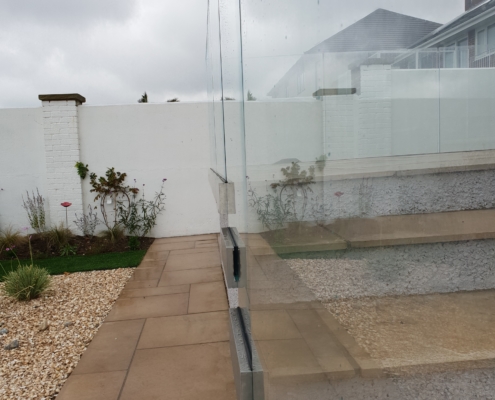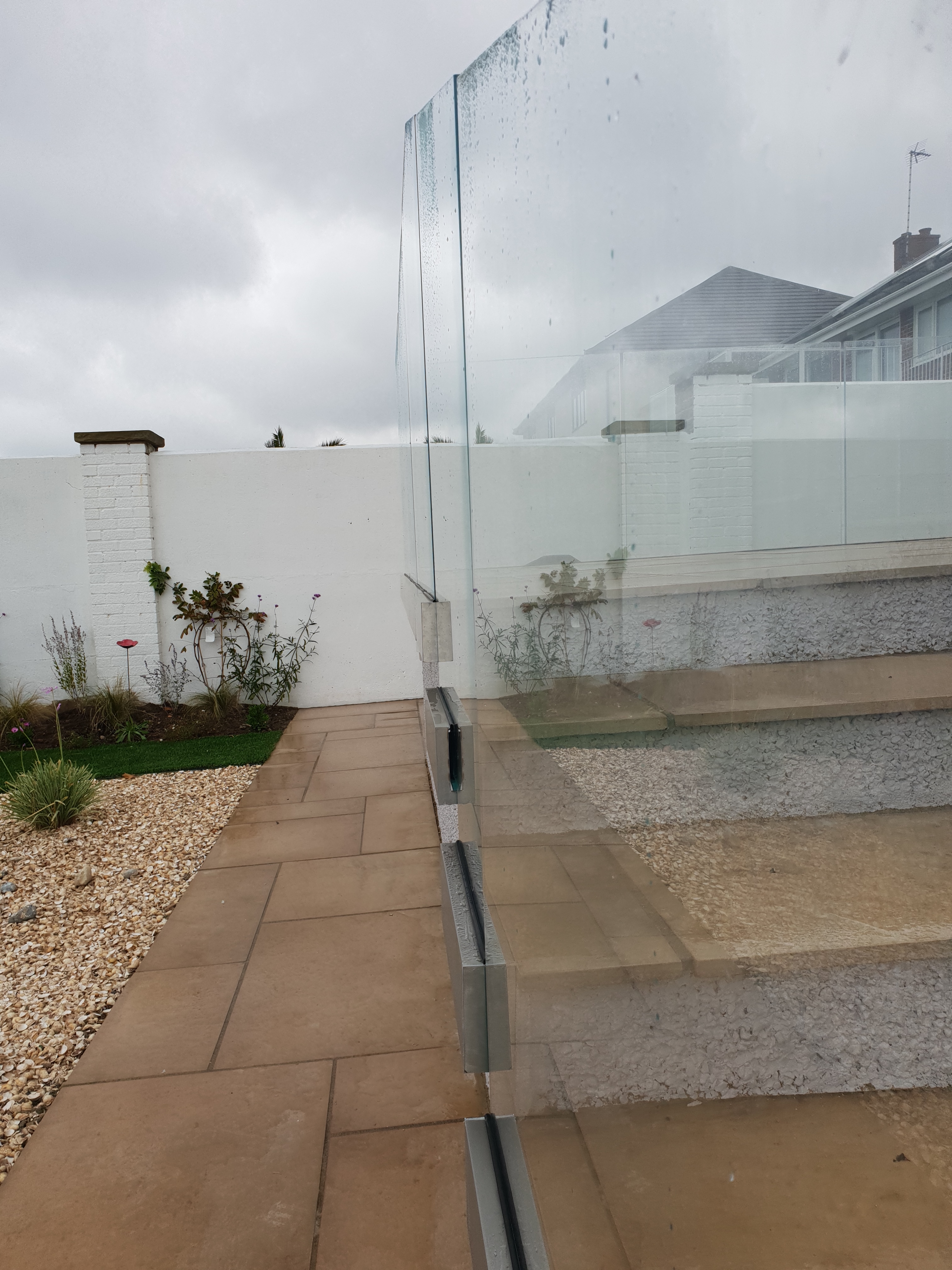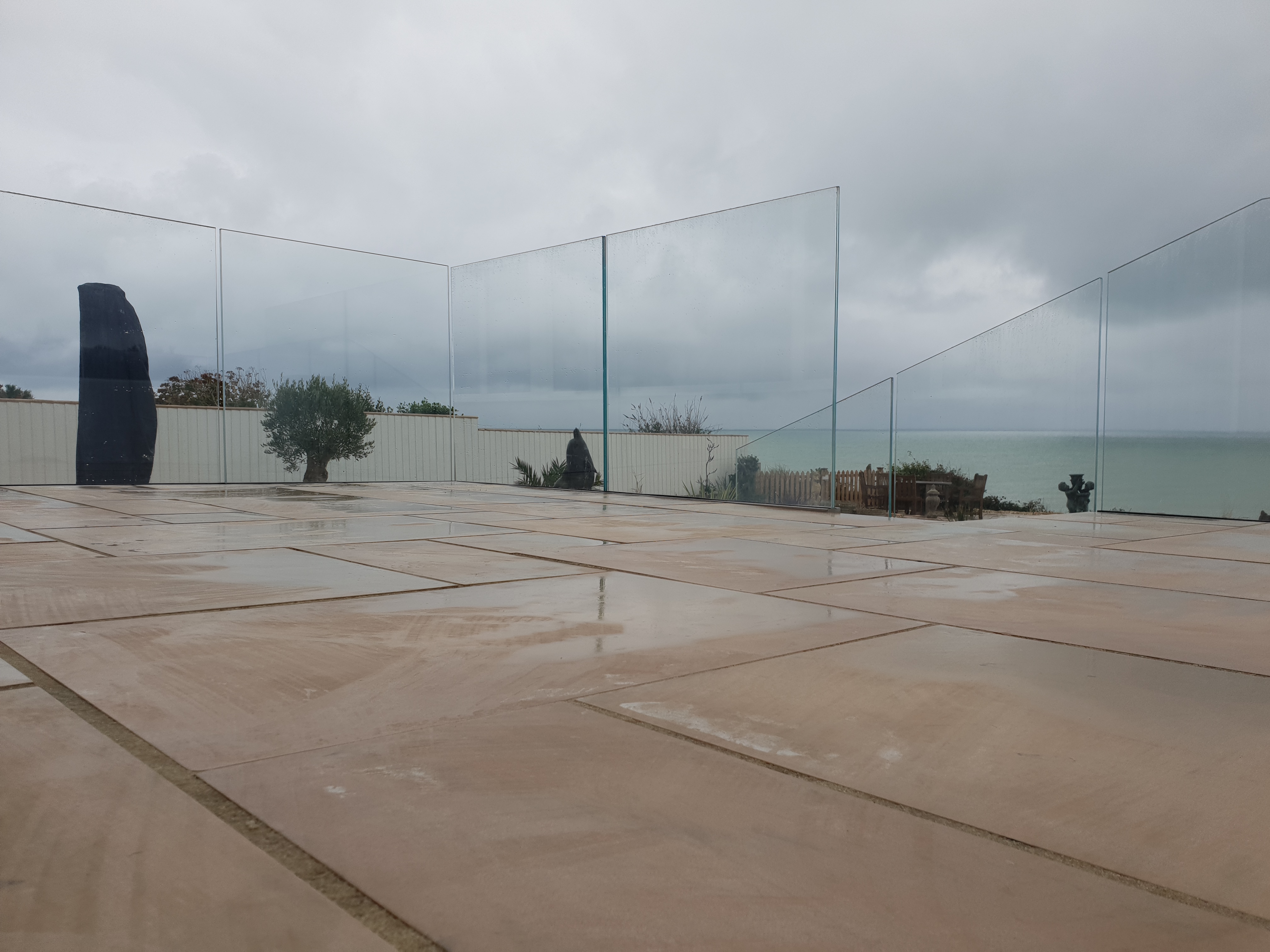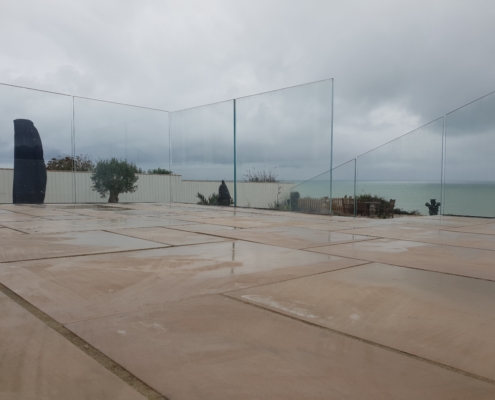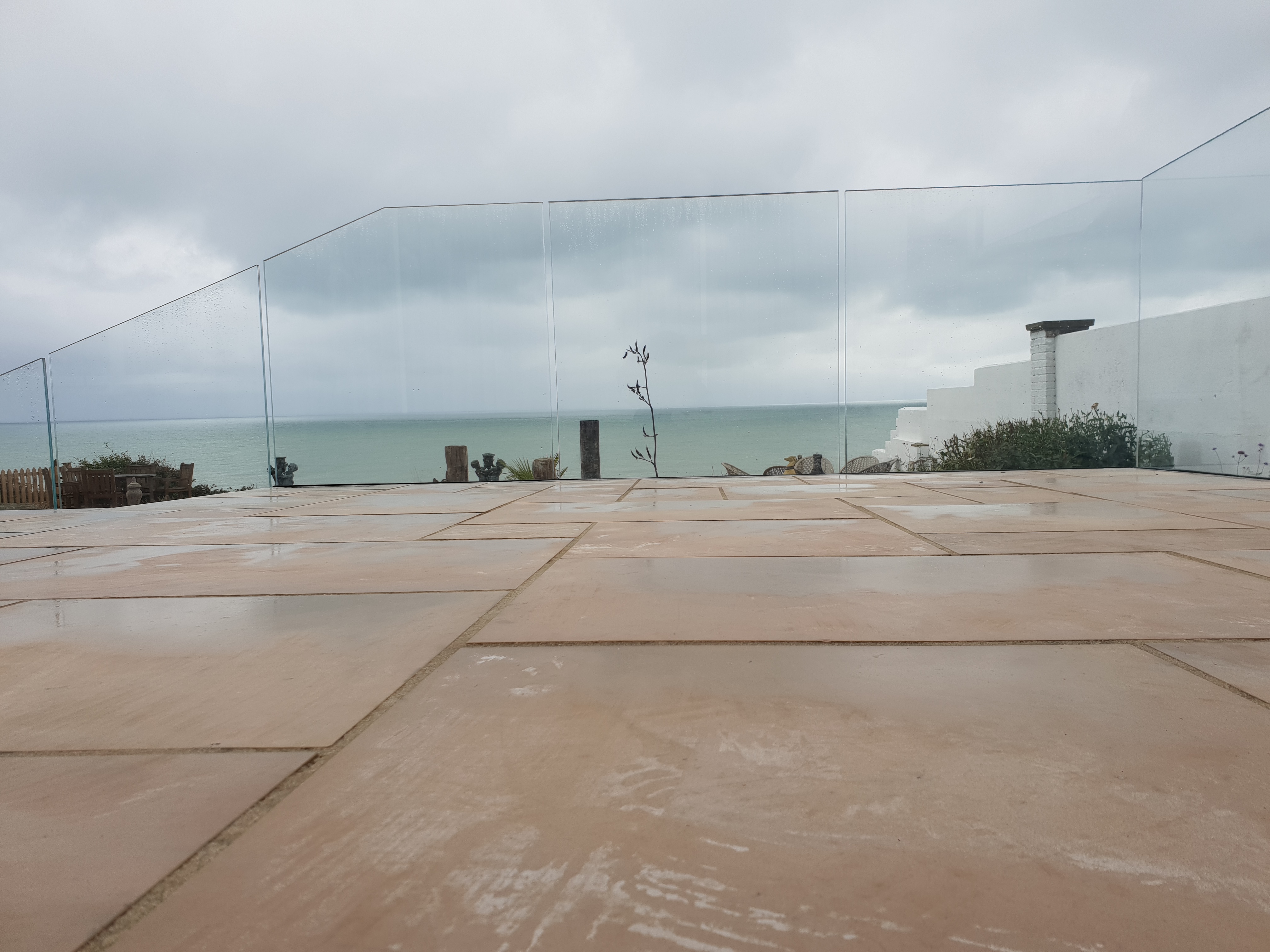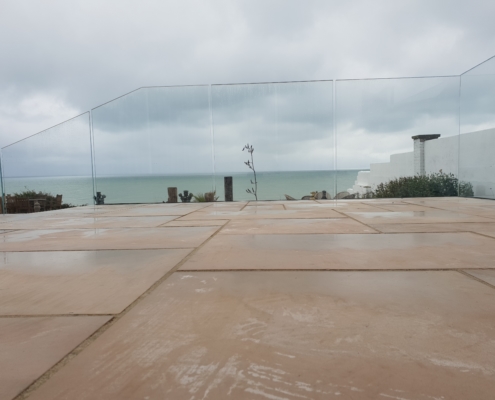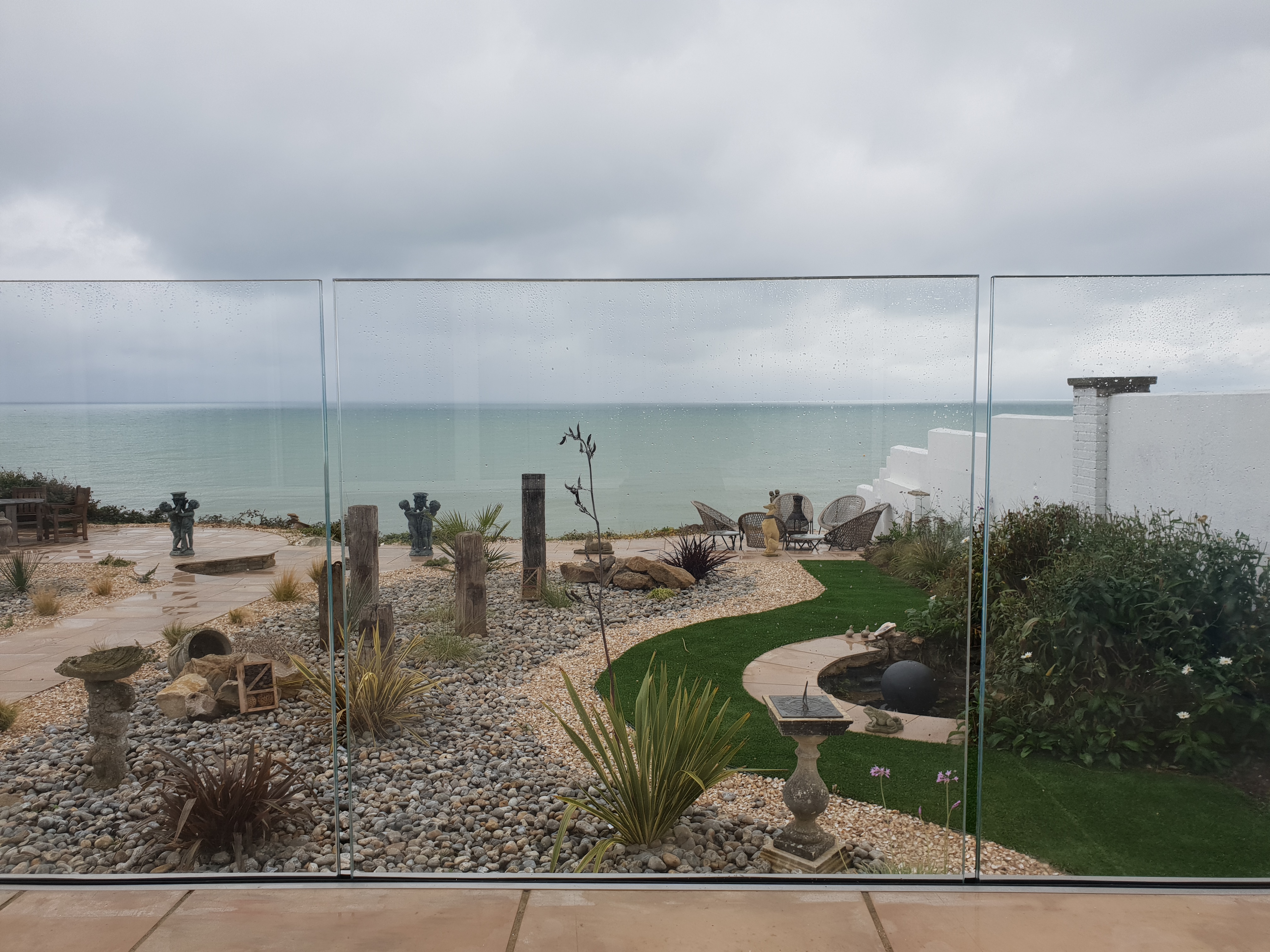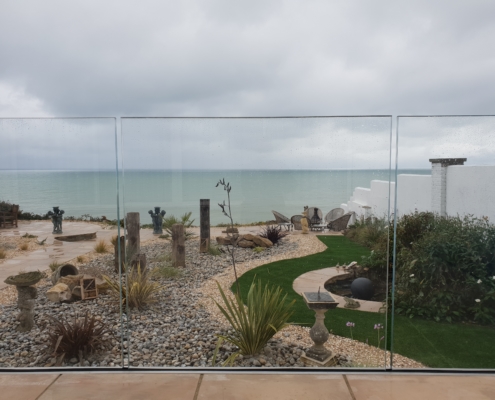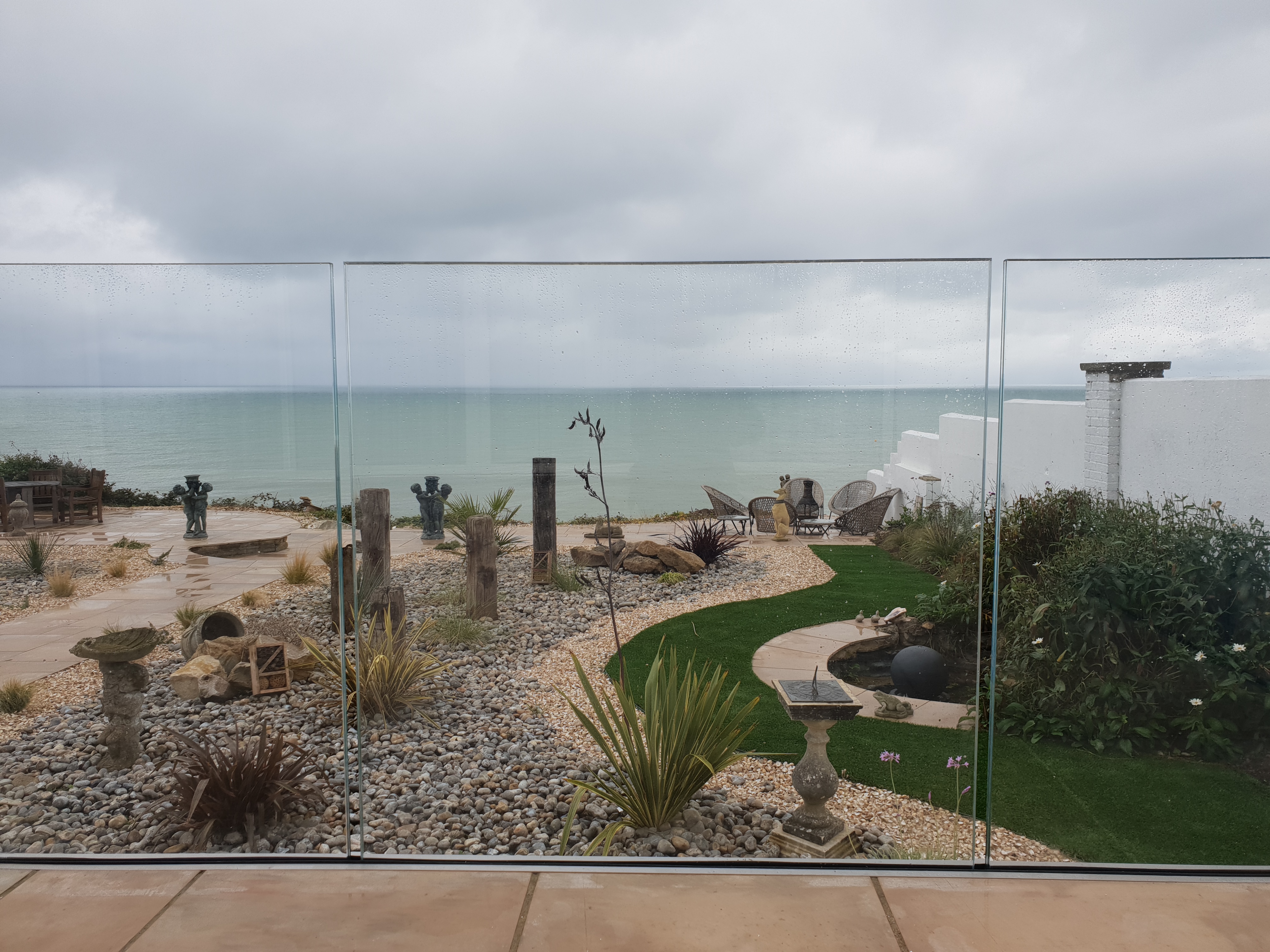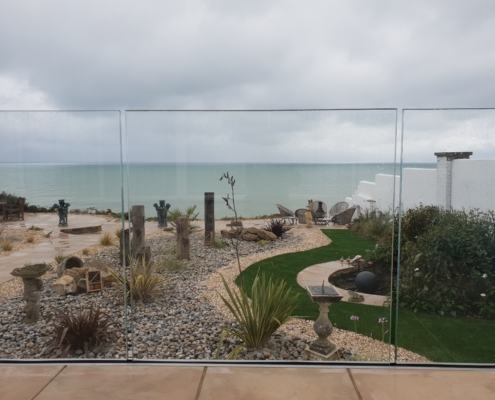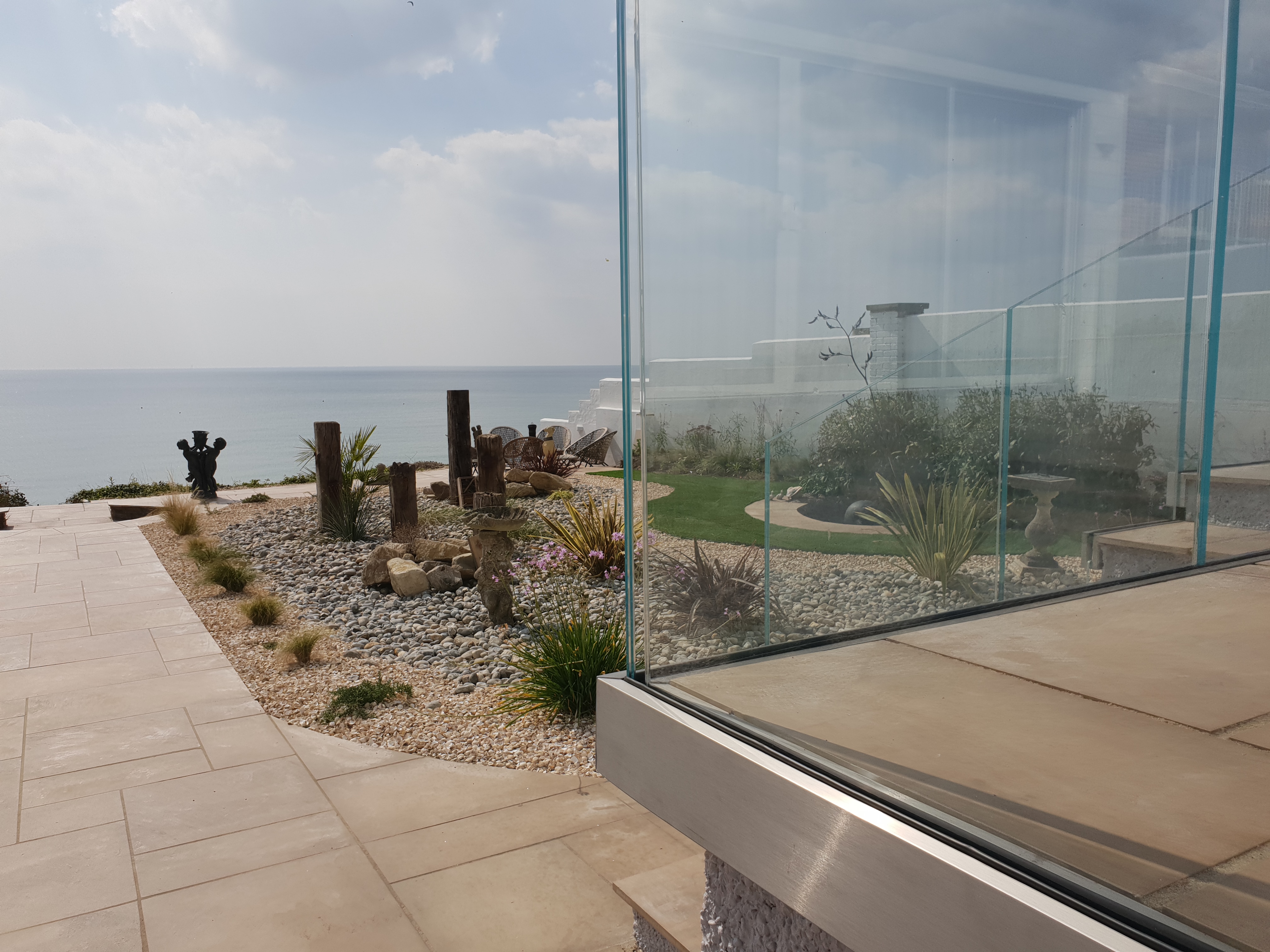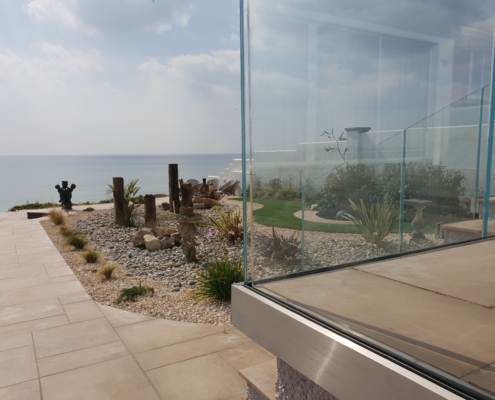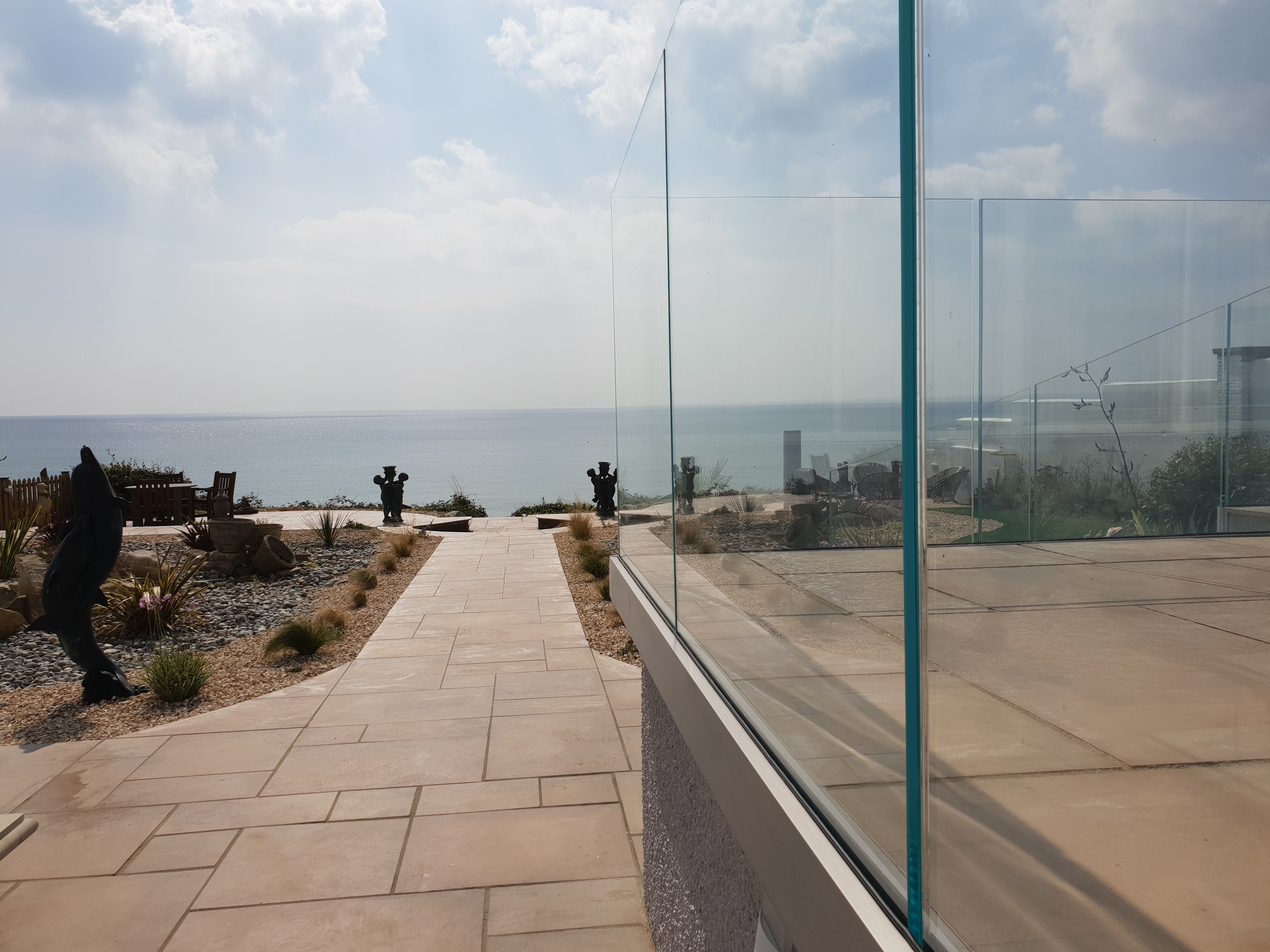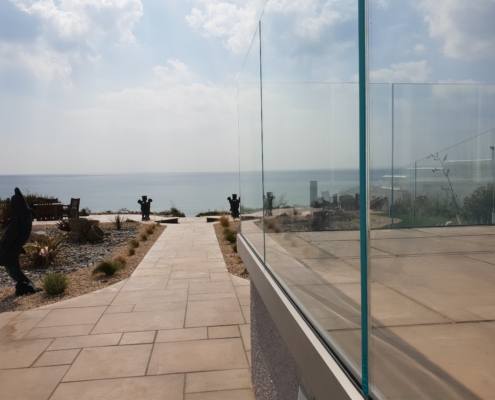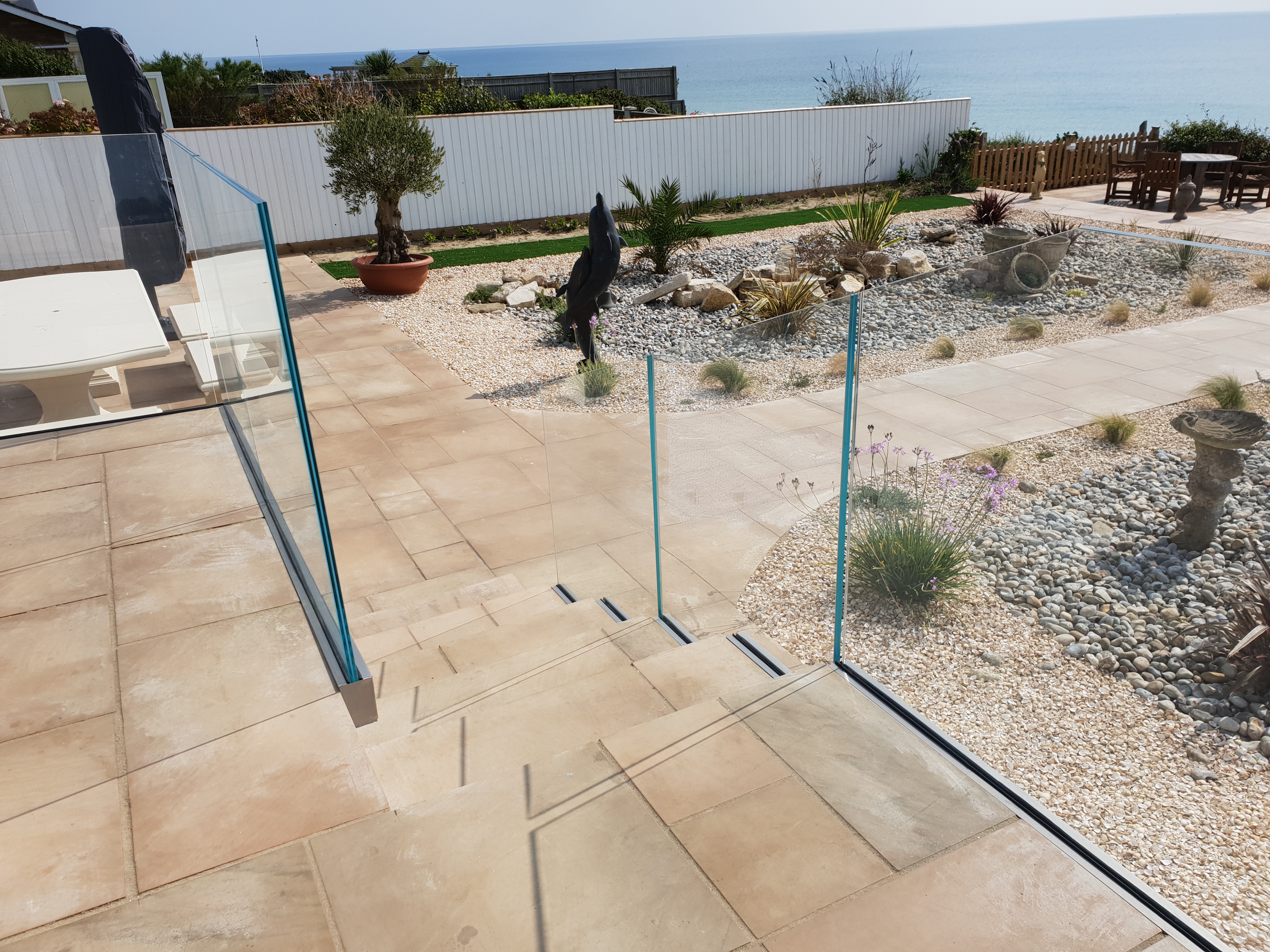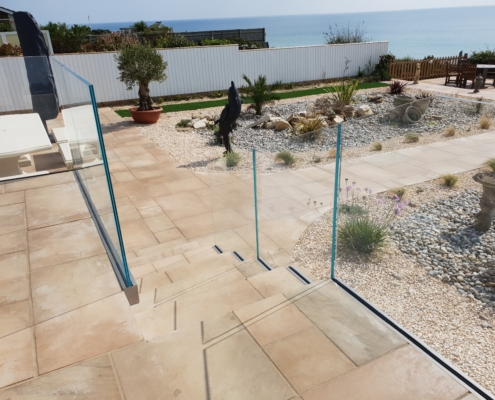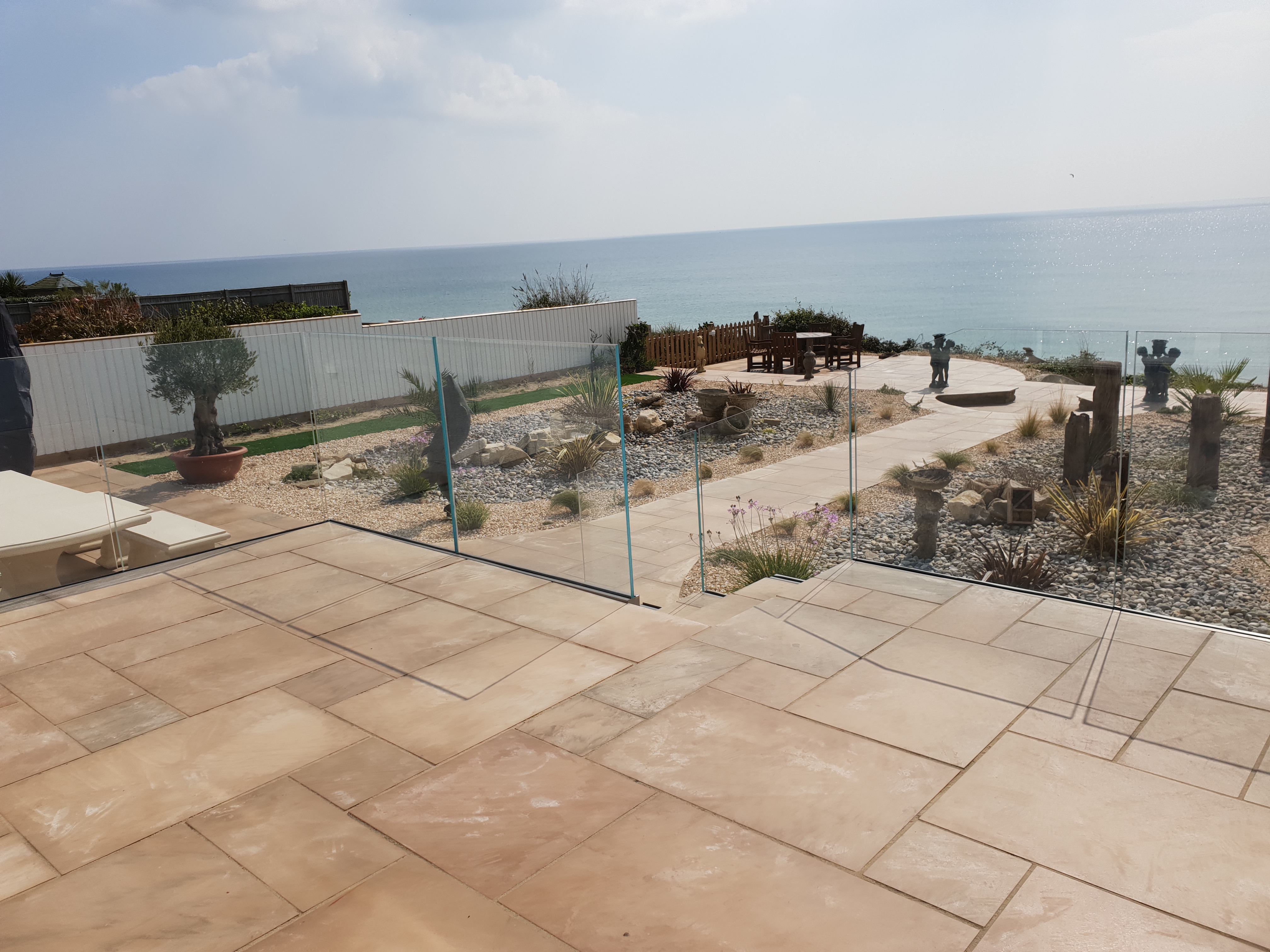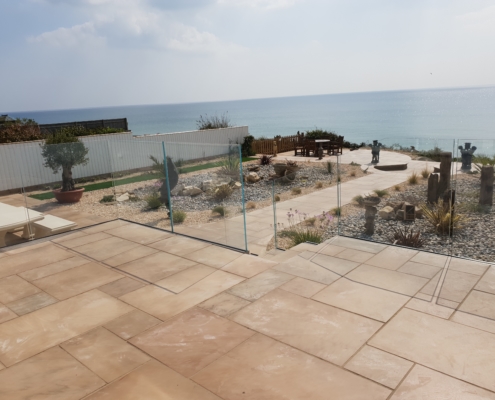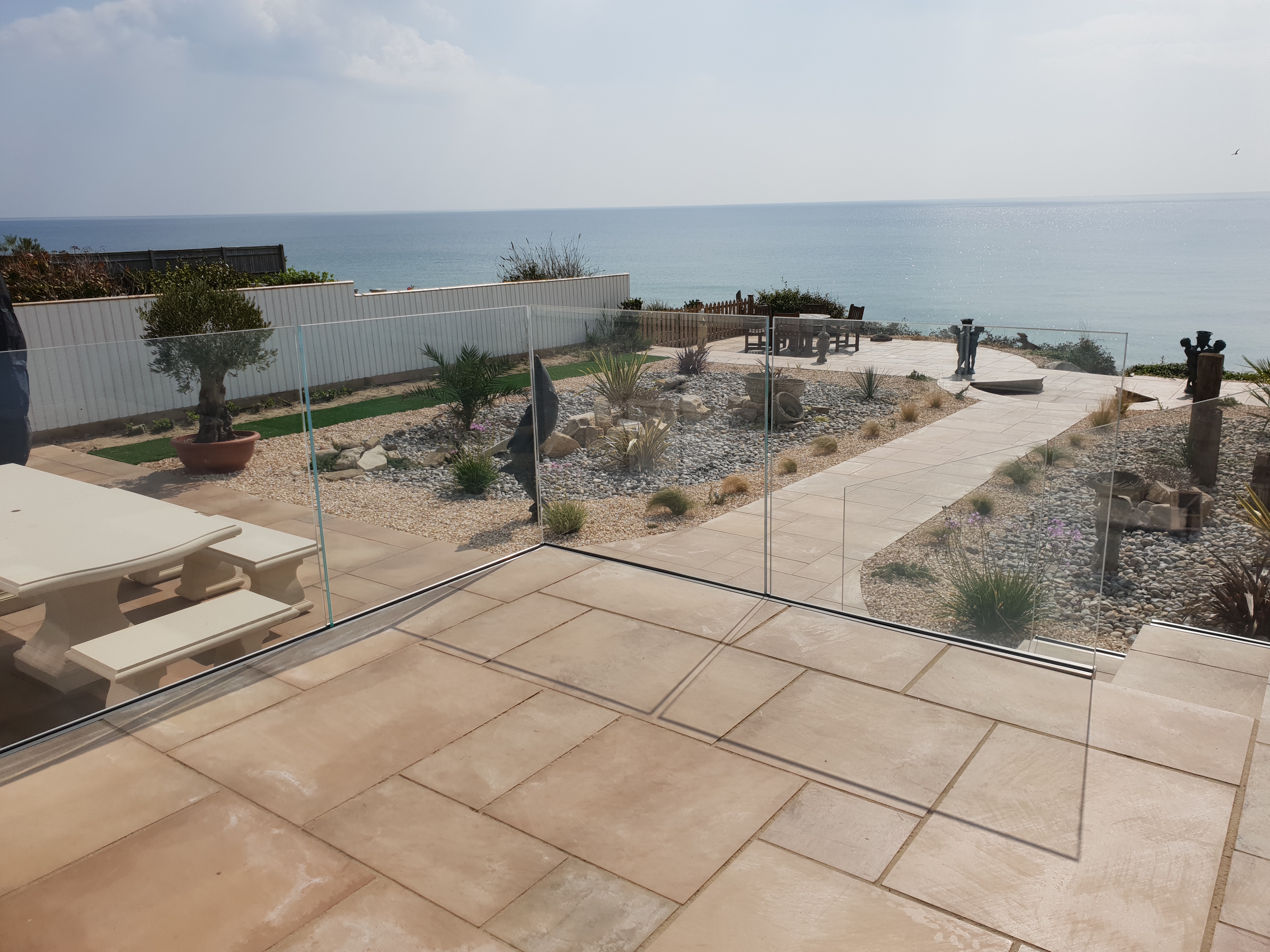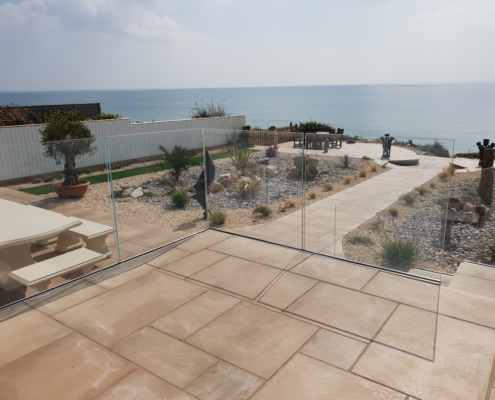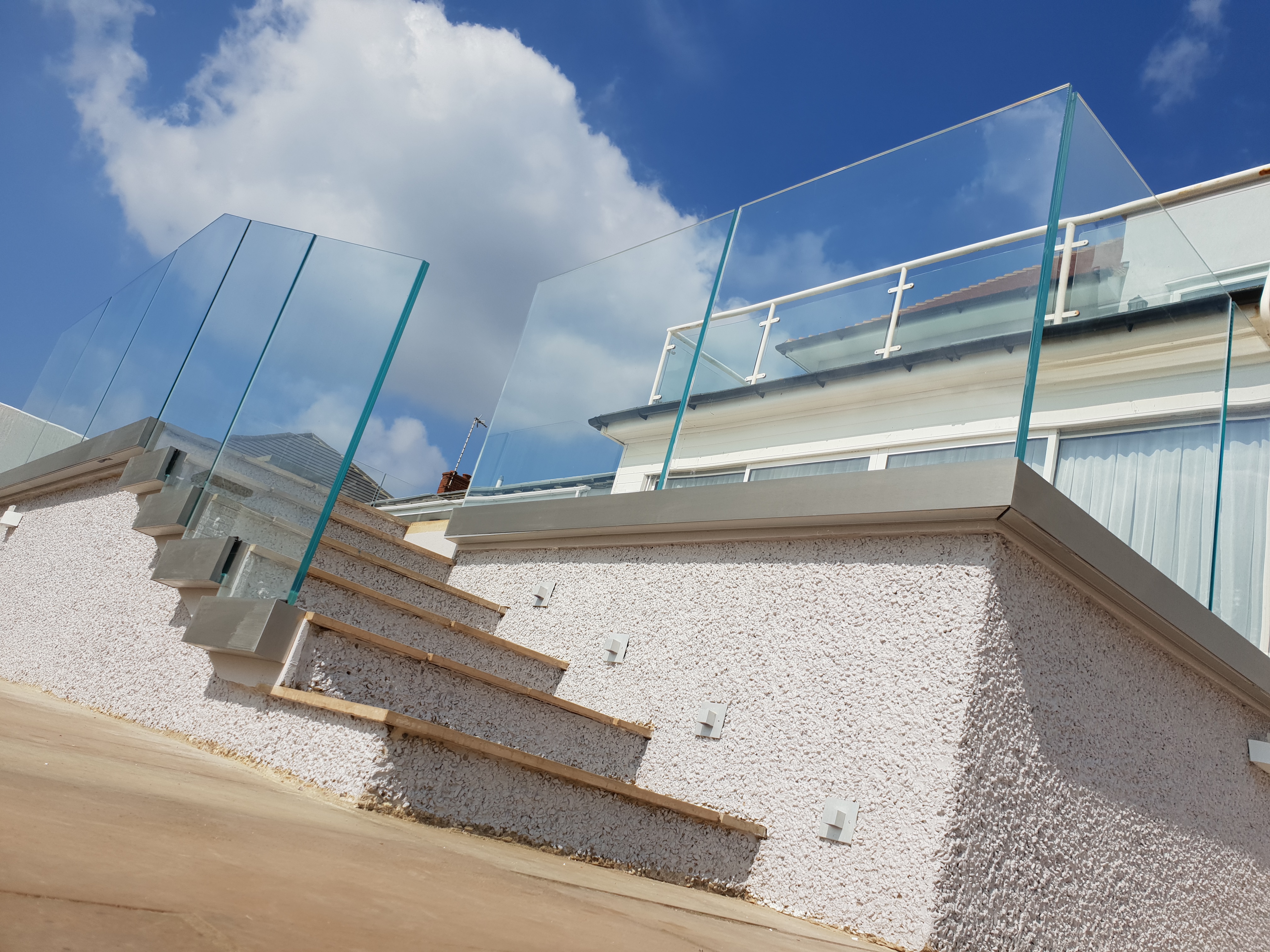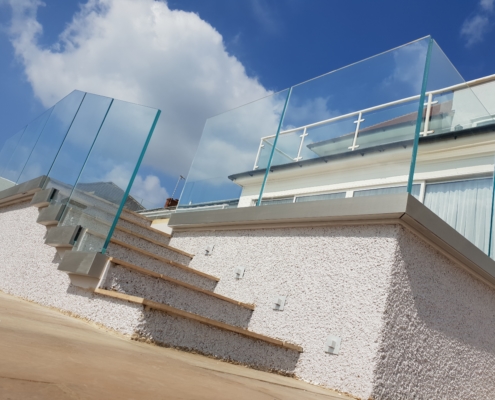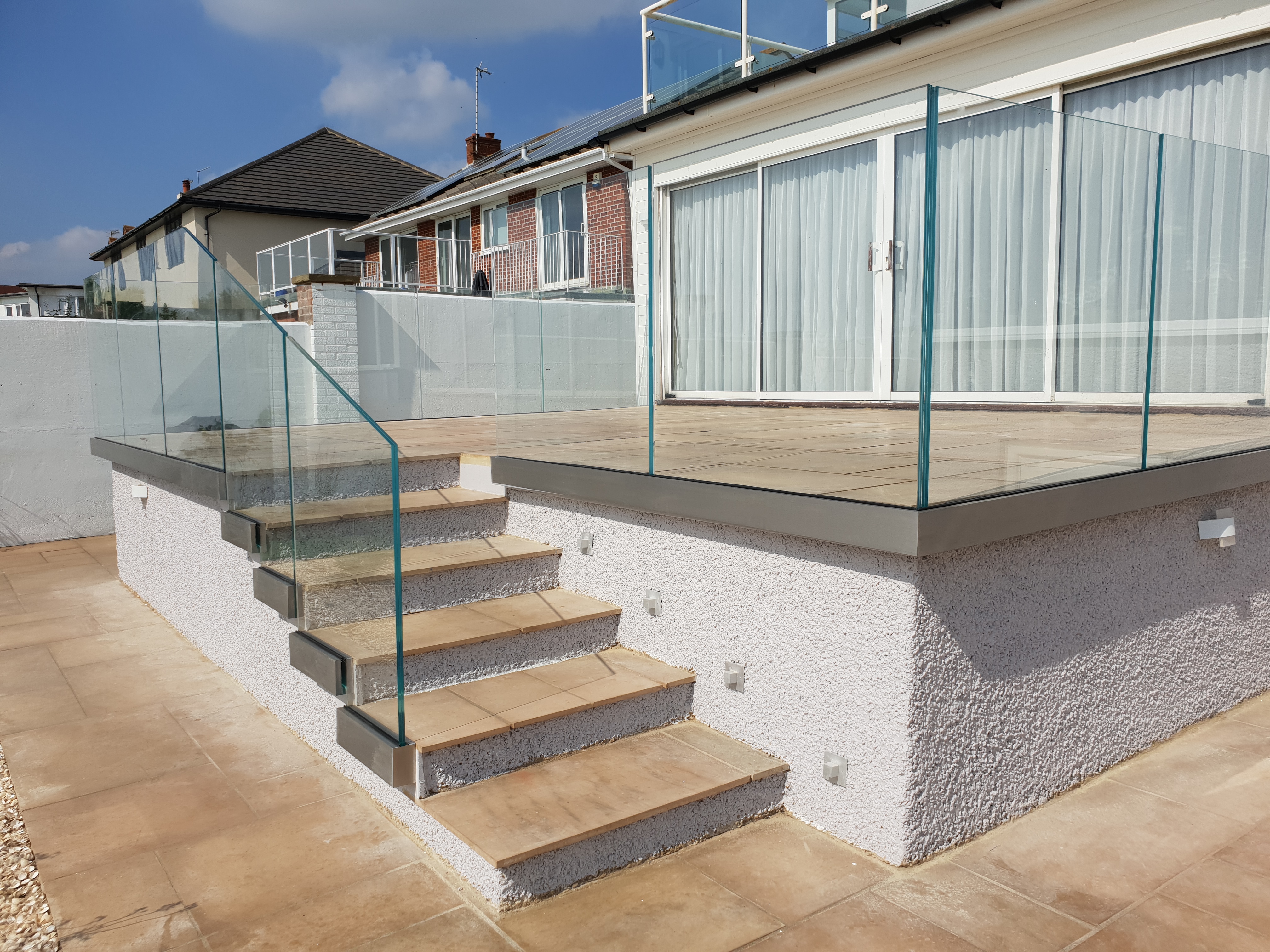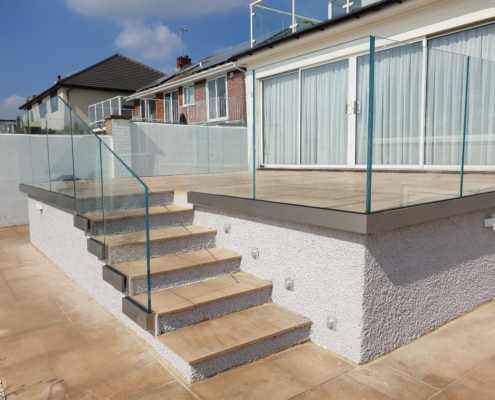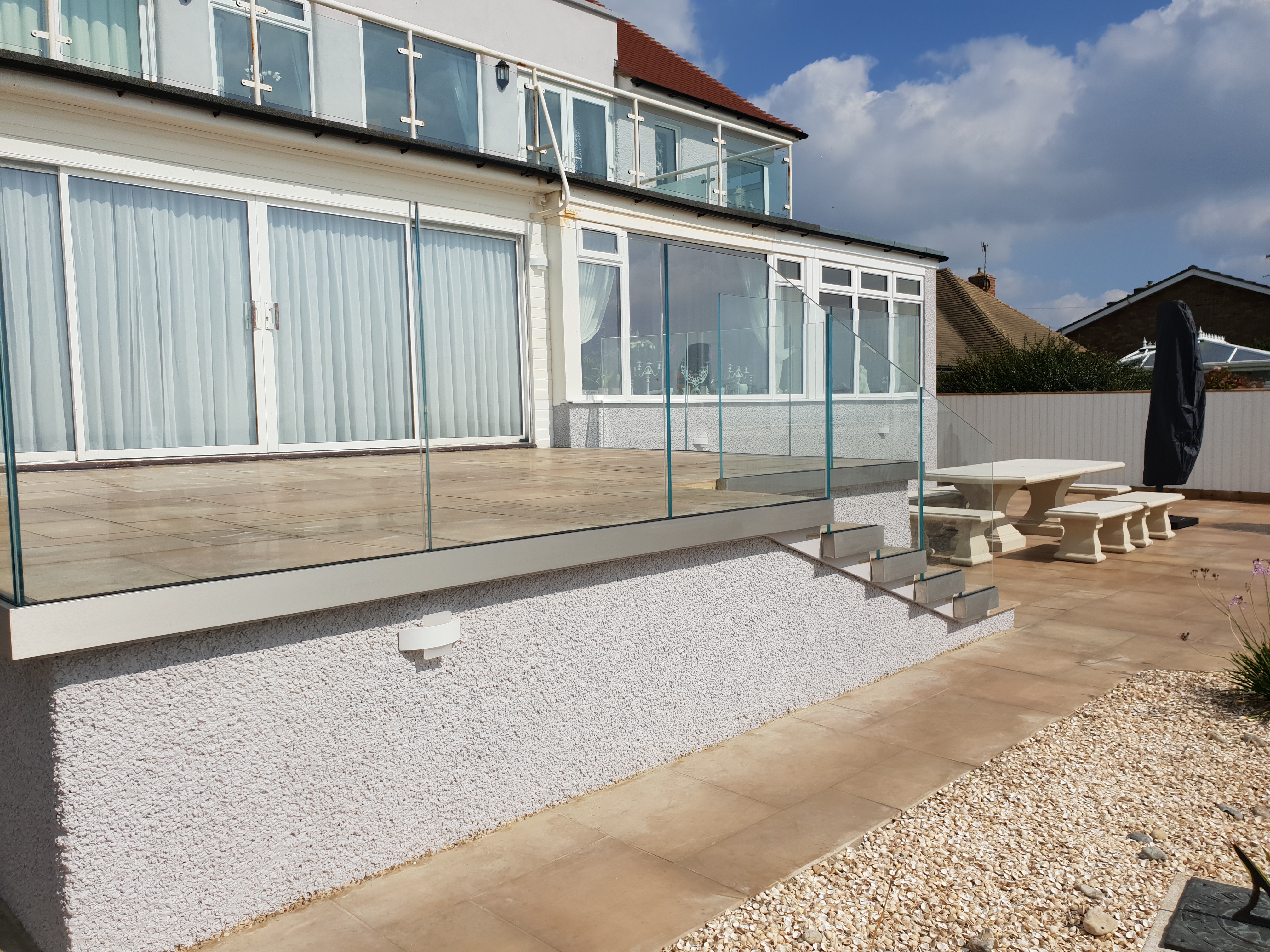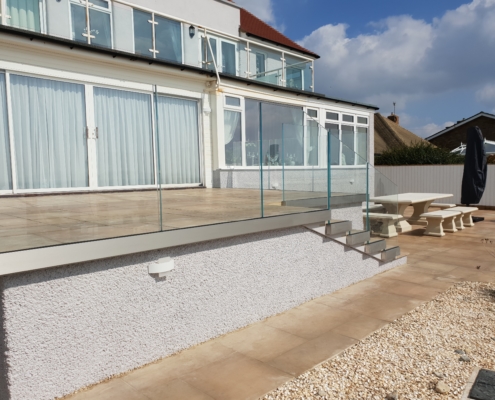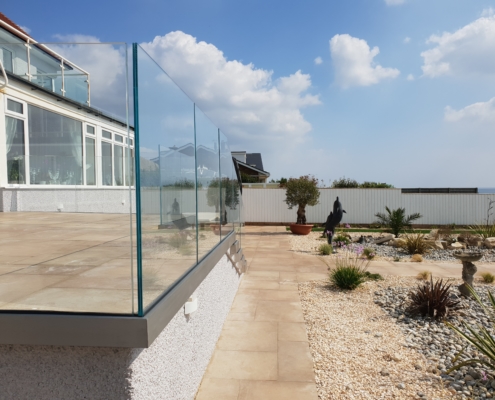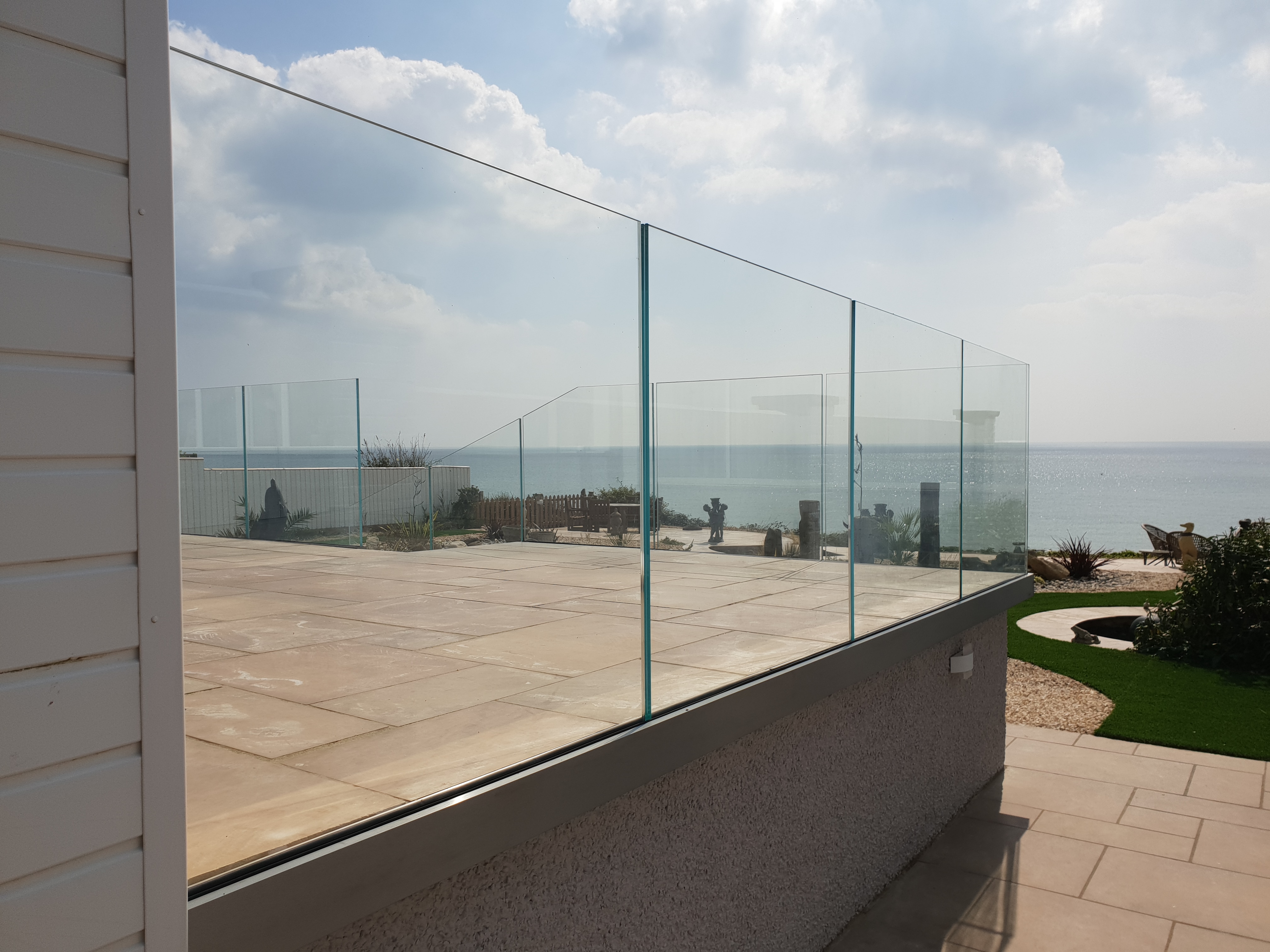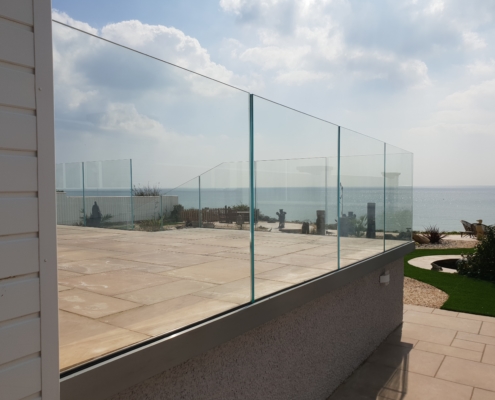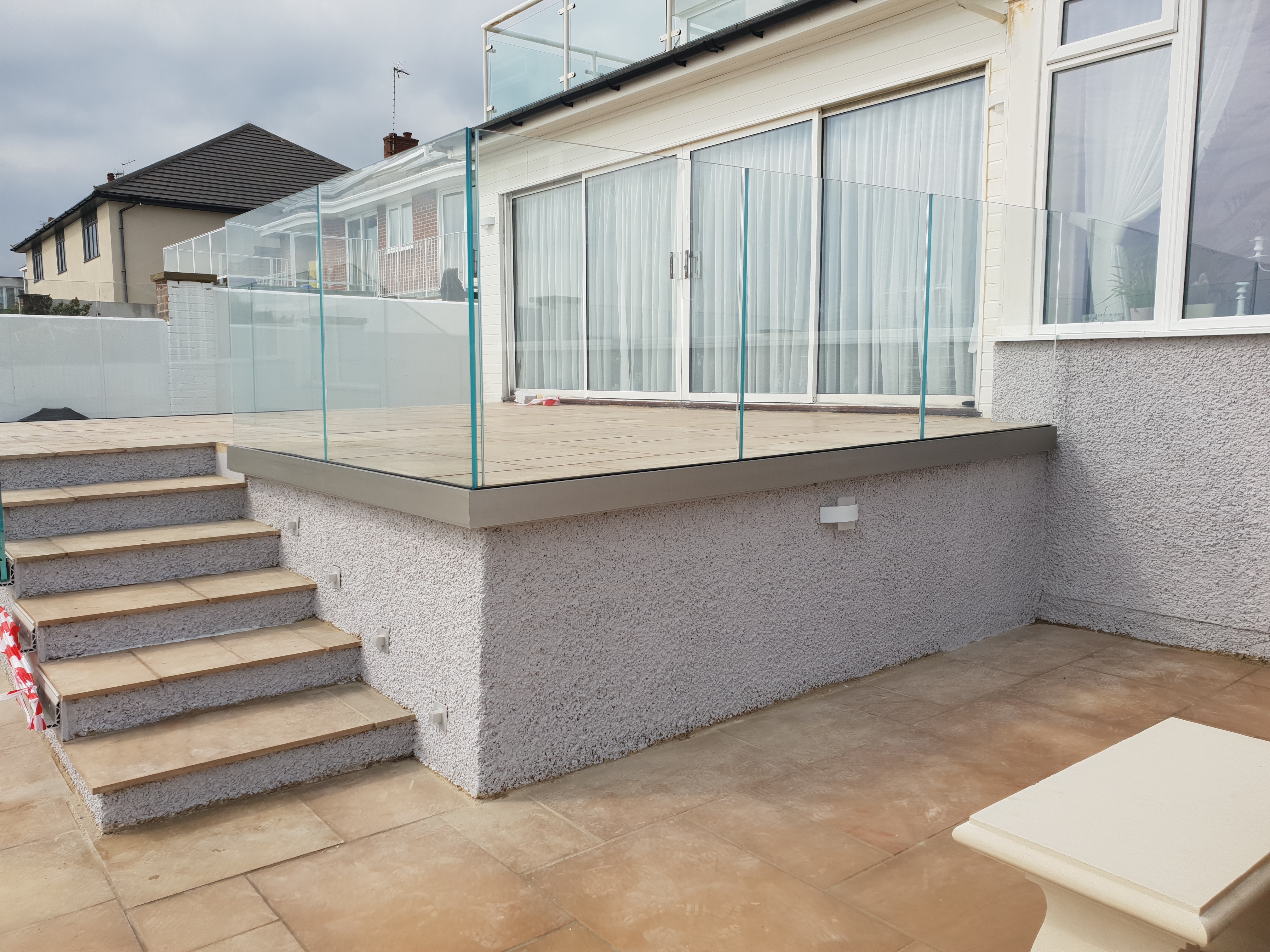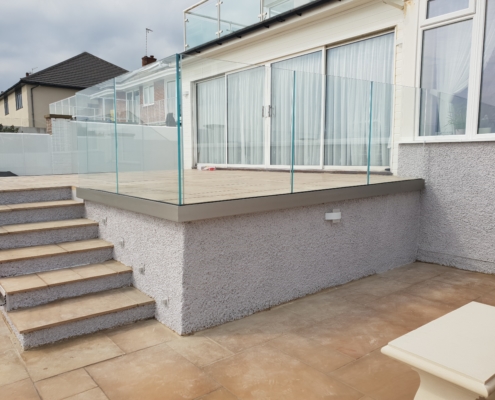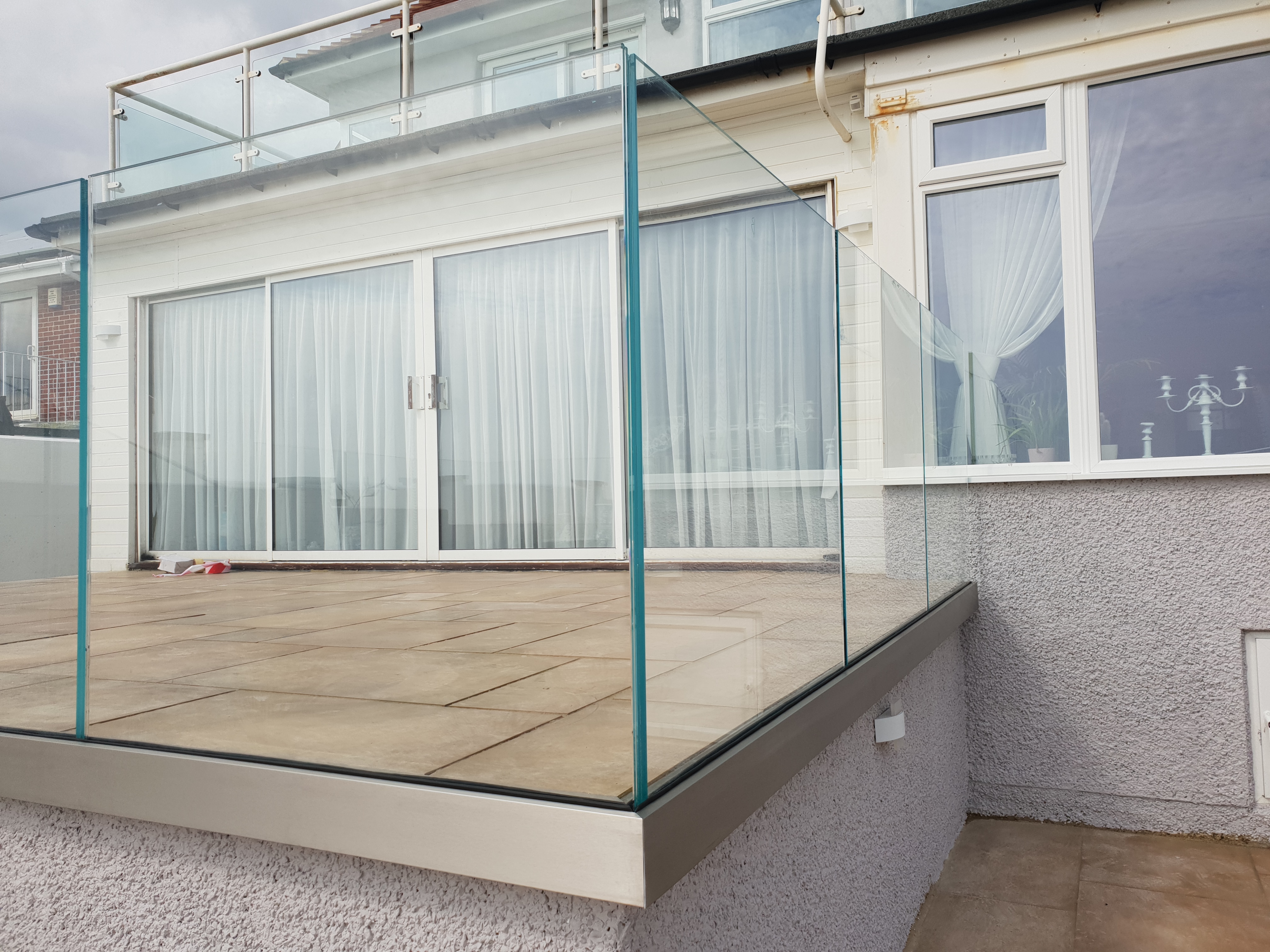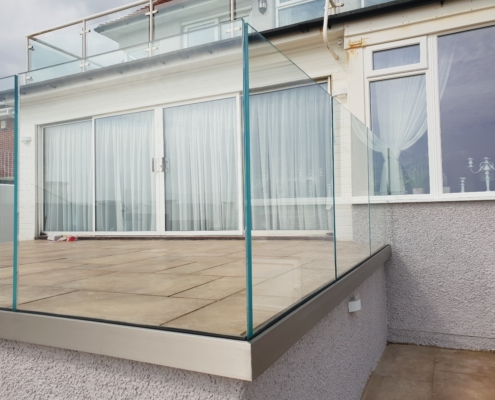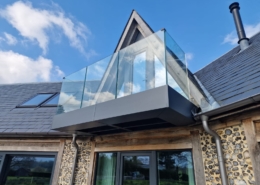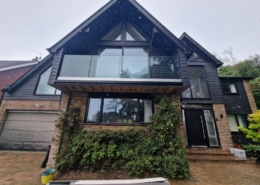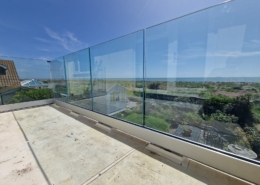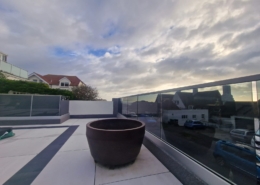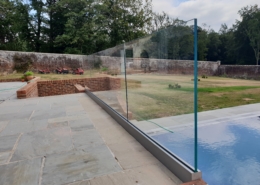This installation involved our extremely high-end glass specification known as low iron glass. In summary, the glass in this balustrade is crystal clear in comparison to standard glass. As there is no handrail used on this residential balustrade, the glass used here is 21.5mm thick toughened and laminated. The fixing method used here is our frameless side mount channel system into a solid concrete block wall.
Project images
Project details
Glass Balustrade project specification:
- Project location: Cooden, Bexhill on sean, East sussex
- Installed area: Garden Patio
- Fixing method: Side mounted track channel system
- Balustrade type: Fully frameless without a handrail
- Glass type: 21.5mm toughened
- Handrail: no handrail
What height does my glass balustrade need to be?
As per the requirements set out in part K building regulations, all domestic balustrades need to be 1100mm high (1.1M) externally and 900mm (0.9m) high internally. For staircases, this is 900mm above pitch line of the stairs. Download a copy of the latest part K building regulations.
Caution that small ledges and parapets can be deemed a step and the balustrade height may be taken from the height of the “step”
Do I need a handrail on my frameless glass balustrade?
We generally always recommended using a handrail on balconies but if the correct glass is used, a handrail can be optional. Generally, the glass must be of a suitable thickness and be toughened and laminated.
Do I need privacy glass for my balustrade project?
In certain situations, privacy glass may be required in order to obtain planning permission for your balcony. We advise that you talk to your local authority to find out if you will require privacy glass. Often, privacy glass may be required where your balcony has a view into your neighbor’s space.
What gaps are your allowed in a glass balustrade?
The maximum glass gaps allowed is anything less than 100mm. This is a Part K building regulations requirement. Check Part K building regulations for the latest balustrade requirements.
What is 316 grade stainless steel?
316 grade is the second-most common form of stainless steel. It has almost the same physical and mechanical properties as 304 stainless steel, and contains a similar material make-up. The key difference is that 316 stainless steel incorporates about 2 to 3 percent molybdenum. The addition increases corrosion resistance, particularly against chlorides and other industrial solvents.
316 stainless steel is commonly used in many industrial applications involving processing chemicals, as well as high-saline environments such as coastal regions and outdoor areas where de-icing salts are common. Due to its non-reactive qualities, 316 stainless steel is also used in the manufacture of medical surgical instruments.









